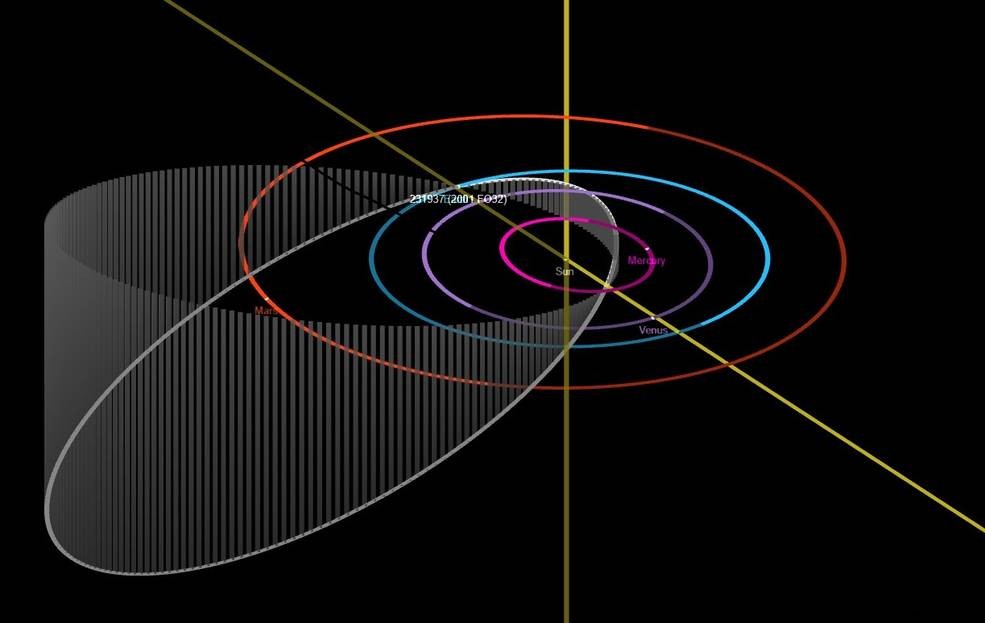Asteroid 2001 FO32 has just passed close to our planet, passing about two million kilometers from it. This event occurred this Sunday, March 21 at 5:02 p.m. Paris time. Of course, there was no risk of collision. While its trajectory was regular and well known, the asteroid had a particularity:a speed greater than most other bodies of its type.
It measures less than 1,000 meters in diameter and has just passed just two million kilometers from our planet. Here is 2001 FO32, an asteroid that was the subject of a NASA publication on March 12, 2021. Specifically, this large rocky body passed at a distance of 2,016,158 km – about five times the Earth-Moon distance. – at a speed of 124,000 km/h . However, this speed is greater than that of most known asteroids. Its passage took place at 4:02 p.m. GMT (5:02 p.m. Paris time), of course without any risk of collision with the Earth. NASA had also recalled that its trajectory was regular and known (see below), having made it possible to avert any danger several weeks in advance.

On the other hand, 2001 FO32 is subject to a classification as "potentially dangerous". This is also the case for all asteroids with a diameter of more than 140 meters and whose orbit is less than 19.5 times the Earth-Moon distance. The fact is that this category of asteroids is a priority for many astronomers. Indeed, it is a question of making an inventory as exhaustive as possible in order to predict their trajectories and to assess the potential risks.
Observed for the first time about twenty years ago - hence its name - 2001 FO32 has always been the subject of increased surveillance. The latter is part of the near-Earth asteroids "Apollo", these going around the Sun in less than a year and can cross the orbit of our planet. NASA has also declared that it knows very little about 2001 FO32, and added that its passage would be an opportunity to learn a lot.
Amateur astronomers have also eagerly awaited the passage of this asteroid in order to observe it. However, only those present in the southern hemisphere (and at low northern latitudes) had this nice opportunity. Moreover, the astronomers in question could only see the body in question with a telescope having at least a diameter of 20 centimeters. A white dot moving like a satellite, this is what people with sufficient equipment could see.
After its brief visit, 2001 FO32 will continue its journey and is expected to come closer to Earth again in 2052. This time it is expected to pass to about seven times the distance Earth- Moon, or nearly 2.8 million kilometers.